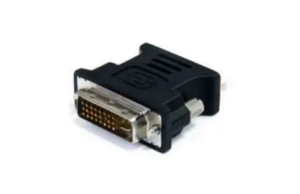DVI connectors, short for digital video interface, is an interface standard that was initially launched in 1999. Issued by the Digital Display Working Group, formed by major companies like IBM, Fujitsu, Compaq, Intel, and others, DVI became the standard for years.
For many devices prior to 2010 or so, DVI became the standard for nearly every form of electronics. Prior to that, VGA had been the standard. If you have a device that can use either, there are some key reasons to go with DVI over VGA.
DVI Types
It is first important to know that there are a variety of DVI cables. They are prominent for nearly every form of electronic device you can think of. In order to accommodate all of the different equipment and pieces of technology, there needs to be different types.
DVI-A. This is a single connector that can only transmit analog signals. Basically, it acts as the VGA analog transmission interface specification. That specification is barely used these days and you probably won’t run into this cable type often.
DVI-D. The “A” is analog, so the “D” is for digital. A purely digital connector, the DVI-D cable is only capable of transmitting digital signals and won’t work with analog signals.
DVI-I. Perhaps the most commonly found DVI cable these days. This cable works with both analog and digital connectors. It becomes compatible by adding four signal pins that are capable of transmitting analog.
Faster Speed
Perhaps the biggest benefit of using DVI vs. VGA cables has to do with speed. In this day and age, the transmission of data has to be lightning-fast. DVI transmits those digital signals, and the image information gets directly transmitted to the display device without the need for any conversion. That conversion with other cables causes quality issues in addition to slowing down the transmission process.
The conversion process totally eliminates the spear phenomenon. Colors are also more realistic and pure because the signal isn’t distorted or changed during the transmission of data. Speed alone leads many to use DVI over VGA.
Supporting HDCP Protocol
Using a DVI connector allows for the support of HDCP protocol. This is basically the foundation for being able to watch copyrighted videos. In addition to supporting your graphics card so that you can watch HDCP videos, you need a dedicated chip as well as a certification fee in addition to the DVI cable.
For the most part, graphics cards are not built to support the HDCP protocol. Only in tandem with the right chip and a DVI cable can this be achieved.
Clearer Picture
Another great reason to go with DVI over VGA has to do with image quality. Other data transmission cables deal with interference and slower speeds. Both of those hamper image quality, leading to smear, blurriness, pixelation, and other problems. It degrades the look of the image.
Computers transmit binary digital signals, so other cables need to convert the signal to each of the color signals using a converter (in the graphics card). That transmission converts from analog to digital and vice versa, which interferes with the transmission of data. Even a brief loss of signal can distort the image and even cause display errors.
That conversion does not need to happen when using a DVI cable. Since there is no conversion required, there is no risk of distorting or losing signal. Without that potential detraction, image clarity and the detail expression are much, much better. Compare devices with DVI capabilities to something from the 90s that used VGA and the difference will be noticeable immediately.

